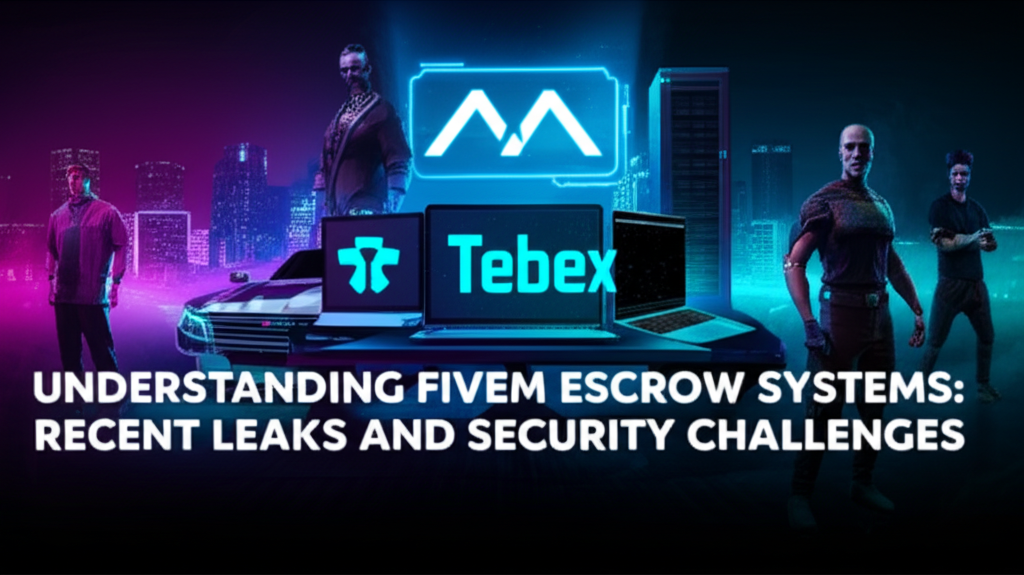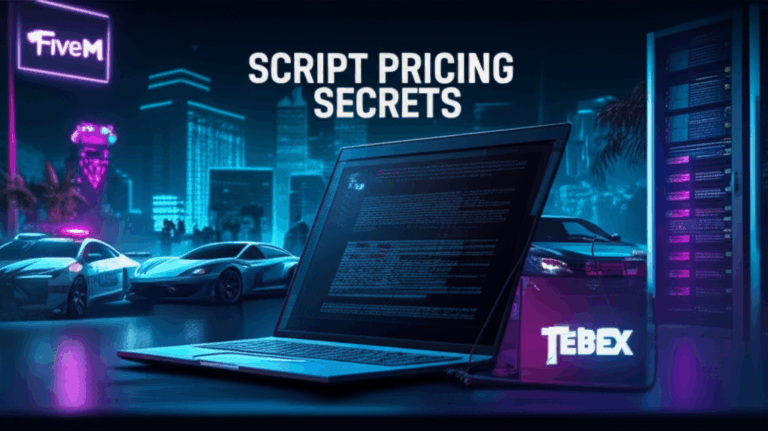
Understanding FiveM Escrow Systems: Recent Leaks and Security Challenges
Have you ever wondered how FiveM escrow systems work to protect your valuable scripts? Or why, despite these protections, some scripts still get leaked? If you’re a FiveM server owner or script developer, understanding the intricacies of escrow systems is essential for keeping your assets safe. In this article, we’ll dive into the recent challenges surrounding FiveM escrow systems, highlight common script security vulnerabilities, and share effective strategies to enhance your FiveM script protection.
Key Takeaways
- FiveM escrow systems act as a shield to protect your scripts by encrypting assets and limiting unauthorized access.
- Recent script leaks expose weaknesses in some escrow implementations and highlight the need for stronger security measures.
- Implementing asset encryption and following best practices can significantly reduce risks of script theft.
- Understanding common security vulnerabilities helps you proactively guard your server’s resources.
- Using trusted marketplaces like Tebex ensures access to secure, well-protected scripts.
What Are FiveM Escrow Systems?
FiveM escrow systems are security frameworks designed to protect scripts from unauthorized access, tampering, and piracy. When you purchase or develop a script, the escrow system encrypts critical parts of the code—often referred to as the “asset encryption” process—making it difficult for others to view, modify, or redistribute your work.
These systems are vital because scripts are the backbone of any FiveM server, especially frameworks like QBCore or ESX. Without proper protection, your scripts are vulnerable to leaks, which can lead to loss of revenue and a compromised server environment.
Recent Leaks and Security Challenges in FiveM Escrow Systems
Despite the advanced nature of many escrow systems, recent leaks have revealed that no system is completely foolproof. Some script leaks occur due to:
- Poor implementation: Scripts with weak encryption or poorly managed keys are easier to crack.
- Social engineering attacks: Hackers may target developers or server owners to gain access.
- Inadequate updates: Failure to patch vulnerabilities promptly can expose scripts to exploits.
One notable issue is that some escrow systems focus heavily on client-side encryption but neglect server-side protections. This imbalance can be exploited by experienced hackers to bypass restrictions and leak scripts.
Examples of Vulnerabilities
- Scripts without obfuscated code can be decompiled and copied easily.
- Hardcoded credentials or license keys that are visible in the script files.
- Lack of integrity checks allowing modified versions of the script to run.
Enhancing FiveM Script Protection: Best Practices
To defend your scripts against leaks and unauthorized use, consider these practical steps:
1. Use Robust Asset Encryption
Encryption is your first line of defense. Many reliable escrow providers integrate strong encryption methods that make the script unreadable to unauthorized users. You can find quality encrypted scripts in marketplaces like QBCore scripts or ESX scripts, which often come with built-in escrow protection.
2. Employ Server-Side Verification
Combine client-side encryption with server-side license verification. This dual-layer protection ensures that even if someone manages to bypass client encryption, they will still need server authorization to run the script.
3. Regularly Update and Patch Scripts
Security is an ongoing process. Always keep your scripts and escrow systems updated to patch any discovered vulnerabilities. Trusted sources like Qbox scripts often provide timely updates addressing security flaws.
4. Obfuscate Your Code
Obfuscation makes your code harder to read or reverse-engineer by scrambling the source files. Combining obfuscation with encryption adds an extra layer of security, making unauthorized modifications more difficult.
5. Avoid Hardcoding Sensitive Data
Never store passwords, license keys, or sensitive tokens directly in your scripts. Instead, manage these securely through environment variables or secure server configurations.
Installing and Managing Escrow-Protected Scripts
Getting started with escrow-protected scripts involves a few straightforward steps. Here’s a quick overview:
- Purchase from reputable sources: For example, the FiveM Garages, Parking, and Impound System on Tebex offers escrow protection out of the box.
- Follow the installation instructions: Escrow scripts often come with specific setup guides—pay attention to any server-side verification steps.
- Configure license keys: Usually, you’ll receive a unique license key that must be entered into the script’s config file or verified through an online portal.
- Test the script in a secure environment: Before deploying on your live server, ensure the script behaves as expected without errors.
Troubleshooting Common Issues
If you encounter problems with escrow-protected scripts, consider the following troubleshooting tips:
- Verify that your license key is correctly input and hasn’t expired.
- Check for conflicts with other scripts or frameworks like Qbox.
- Ensure your server has internet access if the escrow system requires online license verification.
- Review the script’s logs for any error messages related to encryption or authorization.
- Contact the script author or marketplace support for assistance.
Conclusion
Understanding FiveM escrow systems is crucial to maintaining the security and integrity of your scripts. While recent leaks highlight ongoing security challenges, implementing strong FiveM script protection measures—such as asset encryption, server-side verification, and code obfuscation—can dramatically reduce your risks.
Choosing scripts from trusted sources like Tebex ensures you get reliable, well-protected assets and ongoing updates. Remember, security is a continuous effort, so stay vigilant, update regularly, and never underestimate the importance of safeguarding your valuable FiveM scripts.
If you’re ready to explore secure, escrow-protected scripts for your server, browse top collections like QBCore scripts and ESX scripts to get started today!



